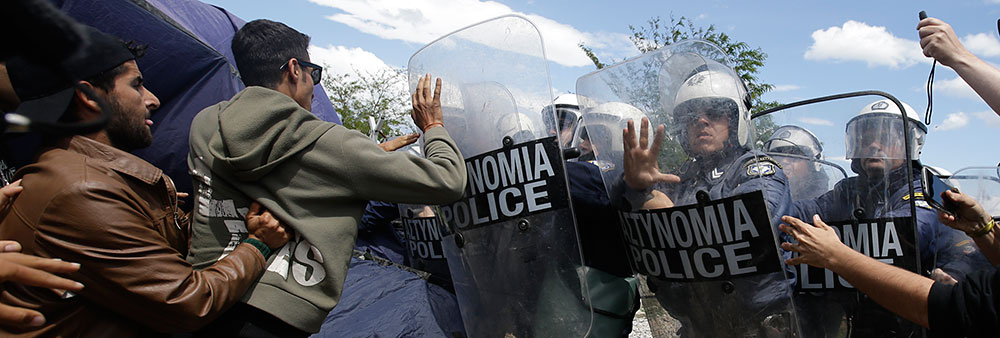The branches of my family tree exemplify the demographic decline of Europe: my grandfather has 12 siblings, my mother has four, and I have none. As for doing my part to halt the decline, I’ve been putting that off until “the time is right.”
Well, it now seems this collective postponement by native Europeans is having a serious impact on the demographic makeup and future of the Continent.
The Old World Gets a New Meaning
In 2004, the median age in Europe was 29; today it is 42. When compared to the US where the median age is 37… or Singapore where it’s 34… we can see that Europe has a demographic problem. This abrupt rise can be attributed to plummeting fertility rates and an increase in life expectancy across all European countries.
European fertility rates have fallen over 40% since the 1960s. And 2015 was the first year since records began in 1961 that Europe recorded more deaths than births. During the same period, life expectancy for Europeans has increased from 69 to 80. Although this increase in life expectancy (due to higher living standards) is positive, it is now putting pressure on Europe’s already strained coffers.
The percentage of the population projected to be age 65 or over by 2050 is 29%. That’s almost double the 2005 level of 17%. To make matters worse, current fertility rates in Europe are 25% below replacement levels. At present, the old age dependency ratio in Europe is 3.4 to 1 (3.4 working people for every person claiming a state pension). This ratio is expected to drop to 2.2 to 1 by 2050. This is troubling both socially and economically.
So, what are the causes of Europe’s demographic problems? First, let’s take a look at the social causes.
Social Shifts
After WWII, large numbers of women began entering the workforce. From 1950–2015 the female labor force participation rate almost doubled in France and Germany. Since the 1970s, almost all European countries have experienced a 10%–20% increase in female labor force participation.
This rise can be largely attributed to the changing values and social liberalization within Europe, which was correlated with the decline of Christianity across the continent.
Some of the most rapid and pronounced changes happened in my birthplace, Ireland, where fertility rates have fallen 59% since 1960. Up until 1973, any woman who got married had to immediately retire. Divorce was only legalized in 1995, and contraception made legal in 1992 (the year that yours truly was born).
For many Europeans, having children is no longer a fact of life, it’s a choice. Given that choice, many women today have chosen to pursue professional careers instead of raising children. As there are only a certain number of hours in a day, the juggling act of trying to hold down a full-time job while simultaneously raising children, has led many to forgo the latter.
However, this begs the question, why have so many adults chosen to spend their days working instead of raising children?
Economic (Dis)incentives Shape Behavior
Due to the rising cost of living across Europe, most households can no longer function on one salary, thus a second income is needed. Since 1980, the average UK salary has increased by around 75%. In the same period, the price of a loaf of bread has shot up 235%, and a dozen eggs is up 294%.
Given that the median salary in the UK in 2015 was £23,000, how could a family living on a single salary afford the average house price of £270,000? That’s more than 12 times earnings. By comparison, the average UK house price in 1980 cost 4 times earnings.
Not only have general asset prices across Europe risen, the direct costs of raising a child have also skyrocketed. Since 2003, the direct cost of raising a child in France has risen 65%. A 2015 survey by The Guardian found that the top reason couples are choosing not to have children is due to the high cost of childcare and education.
The rising cost of living, coupled with an increasing tax burden on Europe’s middle class, has led many to make the economically rational decision not to have children.
What are the current and future implications of these trends?
Population Deflation
As Europe’s dependency ratio declines by around 35% over the next three decades, the tax burden which is currently shared among three people, will be shared by just over two. This will mean higher taxes, and/or longer working hours for workers across the continent. The shrinking European workforce, which is expected to contract by 0.4% each year until 2050, will also weigh heavily on the non-existent economic growth across the continent.
There have already been a number of income and social insurance tax hikes across Europe in the last decade, as governments desperately scramble to keep social insurance funds solvent. Annual working hours have decreased significantly across Europe since 1970, with a 25% drop in France, and a 13% decrease in the UK. However, the majority of European governments have raised the retirement age in their respective countries in the last decade, thus instituting longer working hours in a roundabout way.
However, increasing taxation and increasing the retirement age of Europe’s dwindling workforce alone will not be enough to keep the party going.
As the percentage of retirees across Europe has increased, so too has the cost of funding state pension schemes. With the retiree bracket set to increase over the next several decades, more public funds will have to be funneled into pensions to keep them solvent.
This will put a strain on already overstretched public finances, redirecting funds from areas such as education and health. It is estimated that by 2050, 13% of European GDP will need to be spent on pensions, a 23% increase on 2015.
The implications of an aging population are already being felt across the Continent. While it has impacted public finances, it has also led many young, educated Europeans to emigrate to countries they perceive as having a brighter economic future.
The governments of Europe are well aware of the implications I have outlined above. In an effort to halt Europe’s demographic decline, they have been pushing an open door immigration policy. But as we will see, this policy has created another set of problems.
Migration Miscalculation
At the same time that many young, educated Europeans are leaving Europe, hordes of third-world migrants are arriving. As a consequence of Europe’s open door immigration policy, 1.3 million people arrived on Europe’s shores in 2015. However, like many government programs, this has ended up having the opposite of its intended effects.
Of the estimated 1 million refugees who entered Germany in 2015, it is projected that almost half will end up claiming welfare. Given that 81% of these refugees are unskilled, this is no surprise.
In 2015 alone, refugees in Germany received almost $6 billion in welfare payments. The German finance ministry estimates it will spend over $100 billion on feeding, housing, and training refugees over the next five years. The situation is similar in Sweden, where after 10 years in the country, only 52% of migrants are employed. As a consequence, 60% of Sweden’s welfare budget is spent on migrants.
There is also a security concern with migrants (over 90% are Muslim). There have been a number of reported sexual assault incidents committed by refugees, such as those in Cologne, and more recently in Austria. People should take note of the effect that large Muslim populations have had on countries such as Sweden, in which even police can no longer enter the 50+ Muslim ‘’No-Go’’ zones that exist.
Currently, migrants are a small percentage of the population. However, the Muslim birth rate is 25% higher than that of native Europeans. As such, this percentage of the population is projected to rise rapidly over the coming years.
By 2050, the number of Christians in Europe is expected to decline by 18%. In contrast, the Muslim population set to increase by 63%. That equates to an additional 27.5 million Muslims in Europe, with a decline of 100 million Christians.
As a result of this culture clash, 43% of Europeans now view Muslims in an unfavorable light. Indeed, the backlash against the large influx of refugees into Europe can be witnessed by the recent Brexit vote, which focused heavily on immigration.
Although these problems may not be immediately relevant to those who reside outside of Europe, the risk is no less real. If you happen to be one of the 12 million Americans who take a vacation to Europe every year and stumble into the wrong area of cities such as Brussels or Marseille, this risk will quickly become “real.”
Even if you have no intention of going to Europe, there are implications. Given the amount of trade between Europe and the rest of the world, if the Continent falls into economic or social disarray, it will have huge ramifications for everyone.
Although there is not much that any of us can do about Europe’s demographic decline, understanding any risk is the first line of defense to protect against it. Each week, this newsletter will help readers identify and understand the very real risks which face us around the world today.
Stephen McBride
Chief Analyst, RiskHedge




